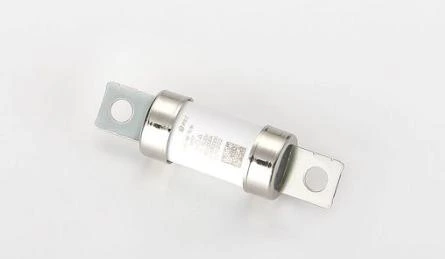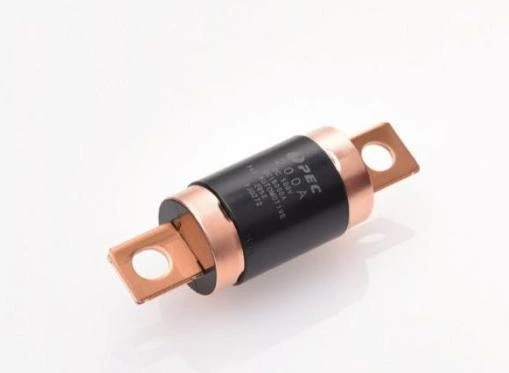Selection And Application Guide Of Ev Fuses Electric Vehicle Fuses
introduction

In the electric vehicle (EV) industry, fuses are crucial safety protection components, used to quickly cut off the current in case of overload or short circuit, safeguarding the battery pack, powertrain and the entire vehicle's electrical system. With the continuous increase in voltage levels and current demands, EV fuses have put forward higher requirements in terms of performance and reliability. This article will systematically introduce the types, main parameters, selection methods, installation and maintenance, and application cases of EV fuses.
The definition and function of EV Fuses
An EV fuse is an overcurrent protection device specifically designed for the high-voltage system of electric vehicles. Its core function is to quickly disconnect the circuit when abnormal currents occur during motor drive, battery charging and discharging, or on-board charging, preventing damage to the circuit or components and reducing the risk of fire.
main application:
- Protect the high-voltage battery pack and cables
- Protect the on-board charging system (OBC)
- Protect the Inverter and the motor drive unit (e-Motor Inverter)
- Protect the DC-DC converter
Type and structural form
Low-voltage side fuse
- Cartridge Fuse:It is commonly seen in 12 V/48 V auxiliary systems, such as lighting and control unit protection.
- Chip Fuse:SMT mounting, suitable for low-power power modules.
High-voltage side fuse
Plug-in HV Fuse
- The plug-and-pull design makes it convenient to replace online
- The rated voltage is usually 400 V, 800 V or higher
Bolt-on HV Fuse
- It is directly fixed to the busbar with M8/M10 bolts
- Support extremely high current (hundreds of amperes to thousands of amperes)
Semiconductor fuse
- Integrated within power modules: For instance, SiC/GaN drive modules come with built-in overcurrent protection.
Key performance parameters
rated current
- It should cover the maximum continuous discharge and charging current of the battery, and take into account the margin (generally 125% to 150%).
nominal voltage
- Usually 400 V, 600 V, 800 V and above; When the fuse is disconnected, it must withstand the peak voltage of the system.
Interrupt Rating
- ≥ The maximum short-circuit current that the system may experience (commonly 10 kA - 50 kA).
Time-Current Curve
- Fast type: Used to protect the output port of the inverter;
- Delayed type: Used inside the battery pack and can tolerate short-term surges.
Thermal stability and temperature coefficient
- It needs to maintain stable performance within the range of -40 ℃ to +125 ℃.
mechanical reliability
- Anti-vibration and shock-resistant, meeting the requirements of automotive-grade EC-Q200.
model selection
Analyze the current requirements of the system
- Calculate the maximum current under extreme working conditions such as motor start-up and climbing.
Determine the voltage level
- The selection should be compatible with the vehicle's high-voltage architecture (400V, 800V).
Leave sufficient safety margin
- The rated current is ≥ the maximum working current × 1.25, and the breaking capacity is ≥ the maximum short-circuit current × 1.1.
Compare different structures
- Plug-and-pull type is convenient for maintenance. The bolt type is suitable for high-vibration environments.
Certification and Reliability
- It must comply with standards such as ISO 16750, ISO 26262, UL, CE, etc.
Installation and maintenance suggestions

- Before installation: Check that the mating surface between the fuse and the busbar is clean and free of oxidation.
- Installation torque: Bolt-type fuses should be tightened to the specified torque (such as 10 N·m) as recommended by the manufacturer.
- Thermal management: Ensure the circulation of surrounding air and install heat sinks if necessary.
- Regular inspection: Monitor the temperature and operating status of the fuse in combination with BMS data;
- Replacement process: Disconnect the main high-voltage switch and lock it with a tag before replacement to prevent accidental electric shock.
Typical application cases
- Electric buses and trucks: 800 V high-voltage fuses protect battery packs;
- Passenger vehicles: Bolt-type fuses are used in motor drive modules;
- Charging pile: Built-in high-voltage fuse to prevent backfeed and short circuit;
- Hybrid power system: The low-voltage side fuse protects the auxiliary battery and control unit.
frequently asked questions
Question: Do high-voltage fuses need to be replaced regularly?
Answer: Under normal circumstances, there is no need for regular replacement. It should only be replaced when the circuit breaker is blown or during maintenance.
Question: Which is more reliable, the plug-and-pull type or the bolt type?
Answer: The bolt-type has better anti-vibration performance, while the plug-and-pull type is more convenient for maintenance. The trade-off should be made based on the usage environment.
Question: Can general-purpose industrial fuses be used to replace EV-specific models?
Answer: It is not recommended. The general model may not meet the automotive-grade temperature, vibration and safety standards.
conclusion
The fuse of an electric vehicle is the first line of defense for the high-voltage and low-voltage electrical systems of the entire vehicle. Correct selection, reliable installation and regular maintenance can ensure the electrical safety and performance stability of the vehicle under various working conditions.